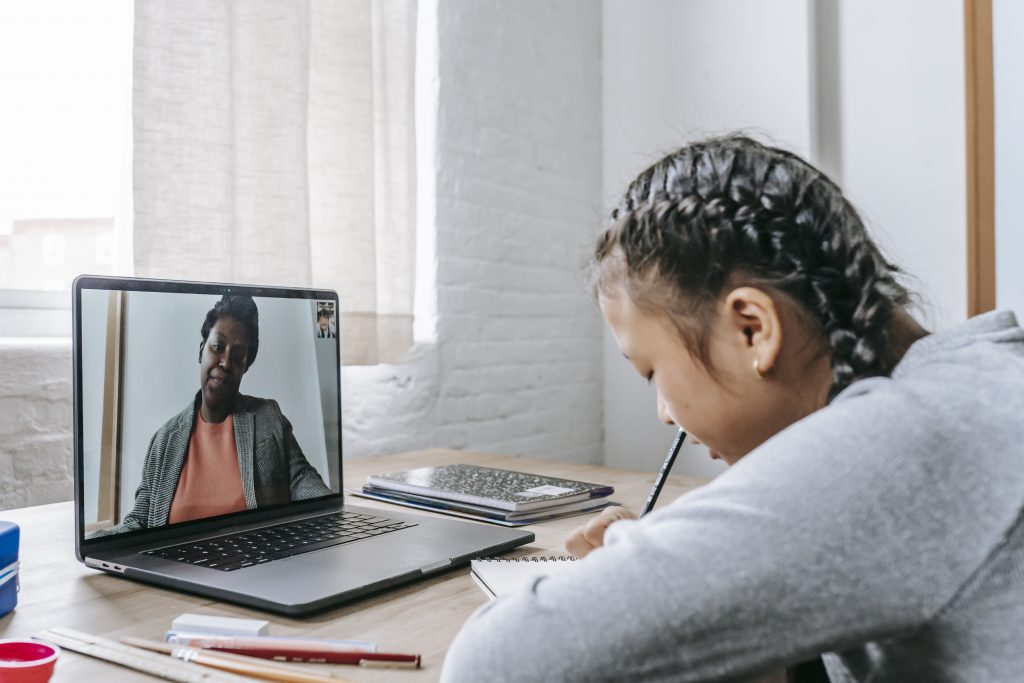Techuity – are we there yet? (Debate #2)
As part of this debate’s team on the disagree side, I felt very certain of my position from the get-go. I chose this topic because I feel strongly about the lack of equity that technology provides and the ways in which it actually perpetuates inequity among students in the classroom. However, reflecting more deeply and thoughtfully on this topic post-debate, taking into consideration what the agree side had to say (excellent job, btw!), I once again find myself questioning the rigidity of my previous stance.
As stated by Amundson and Ko in this article, “[t]he shift to remote learning was a blow to many students who were already vulnerable, particularly students of color and low-income children and youth” (2021, p. 14). I strongly agree with this statement because I witnessed it first-hand. The most vulnerable students in my class were the ones who openly admitted that school was the place they felt safest. Remote learning ripped this away from them and attempted to mimic the classroom setting digitally. Unfortunately, the home life of many students does not support an adequate learning environment, or more importantly, an environment that provides safety and security of basic physical and emotional needs. Of course, it’s not technology’s fault that we were hit with a life-changing event; the pandemic could have arguably yielded even more detrimental results without technological intervention (mass production of PPE, vaccine development, etc.). But did technology, in this particular scenario, lead to a more equitable society for our students? No, I don’t believe so.
On the other hand is the question-what, then, is the alternative? What if technology was not available to make remote learning and digital classrooms possible? In the article, Amundson and Ko go on to talk about how technology makes it significantly easier to differentiate instruction and tasks, access professional development, streamline assessment, and share work with other educators (2021, p. 16). In this regard, from a teaching perspective, technology has certainly supported equity. The access technology provides to, well, everything, gives anyone with internet and a device a gateway to everything in the public cyber-sphere. Hypothetically, this should shrink the gap to nothing and, given everyone has digital access, equity shouldn’t be an issue. But this is not the case.

As argued by Tracy, Nicole, and Stephen in their intro video, technology has led to more equity for individuals with disabilities, increased access universally, diversified learning opportunities, and is not solely responsible for maintaining the achievement gap. These points were extremely well-argued and I found it difficult to disagree with them. I’m not sure anyone could say that a technological device that allows a child to communicate, when they otherwise couldn’t, has not led to more equity.
Somewhat of a tangent here, but during the early lockdown days of the pandemic, I was home with my 4-month-old. I was lucky to be able to introduce her to many family members and friends prior to social-distancing protocols and household gathering restrictions, but soon window visits and video chats would have to do. I think about my 88-year-old grandmother who lives in an apartment for seniors and is not very mobile herself. Without her iPad and the ability for me to send her pictures and videos of my daughter, she would not have been able to see June grow over the first year and a half of her life. I had conversations with many others who had similar experiences with grandparents and elderly relatives during this time. In this case, technology helped decrease an equity gap related to age and ability.

The conundrum of whether or not technology has led to a more equitable society can be summed up in this statement (full article here) by Matt Jenner: “too many exclusions still block the fundamental right of access to education” (2021). The major exclusions that prevent equity are not ones we can fix through the use of technology. The structural inequalities embedded deep in the fabric of society naturally permeate into all the worlds created by human hands and minds, including the digital world. It’s daunting to think about what we can even do to address the root of the problem. Perhaps a first and important step is recognizing that while providing universal digital and physical access to technology creates opportunity equity, it is not a replacement for the work that is needed to fix much larger societal inequities.
Final stance? Technology has not led to a more equitable society…at least not yet. But, alongside other interventions, it could help.
12 thoughts on “Techuity – are we there yet? (Debate #2)”
Great post, Christina. I totally agree that it has not made society more equitable, however, it has closed a number of other gaps (if those diversified people are privileged enough to access the technology… i.e. funding issues or cognitive abilities, etc.). Globally, I believe it has created a more significant divide. More locally, I think technology has brought many people together but pushed some away who are not privileged enough to access technology or a network. Great post and very well done job on your debate!
Thank you! Same to you on yours last night!
What a well written and thoughtful blog, Christina! I completely agree with your final thoughts, technology is not the answer (as of yet). I think as educators we feel helpless in these larger systemic situations, technology aided or not. I know I had hoped the pandemic would shed a new light on education and its inequities, drive some new initiatives, and change practices. While I believe it has made changes to how education happens, nothing has changed the gaps we see between the privileged and those with lower incomes. What an unfortunate realization.
Thanks for the comment, Stephen. “Helpless” is most definitely how it feels. It’s almost too much to think about sometimes, trying to do everything in our power to differentiate and meet student where they’re at, realizing that sometimes are efforts are no match for bigger societal issues.
Hi Christina. You made some great points here. I, too, connect with being a new parent during the pandemic and being able to communicate with my family members. The pandemic and lock-downs have had such an impact on our elderly people and their needs are often overlooked. I am lucky that my 90 year grandmother is able to use an iPhone to send and receive messages, so I can share pictures and videos of my two boys. I agree with your overall stance that technology is not the fix for societies equity issues.
Thanks Rae. I can relate to that so much. I am so grateful technology allows us to connect that way. It’s heartbreaking thinking about having no line of communication to share those kinds of things with our grandparents. I’m sure you’re also very glad that the most difficult of those times are likely behind us.
Very well written. I found myself thinking of my students who have been successful with the support of technology and how even with limited success, school during the pandemic may have been impossible for everyone without it.
I liked your thoughts that technology supports equity, but does not result in equity. That summarizes it better than a lot of articles I’ve looked at.
Like you and a lot of us in the this class I was also a new parent when the pandemic hit and without technology my son would not have heard his relatives voice for two years without video chats. My relatives and friends would not have been able to see him grow without social media.
Technology holds great promise, but is dependent on our actions.
Hi Mike. Thank you for your response. It certainly was a strange time to be a new parent. I’m glad you were able to connect with your loved ones in at least some capacity during that time.
Absolutely-technology has provided opportunity where there was none before, and despite it not solving all the problems, it still solved some of them, or at least opened an avenue to help solve them. I suppose it’s an important thing to remember even if it has not (yet) led to more meaningful changes in equity achievement.
Hi Christina! I feel like I’m echoing the other’s commentors, but I agree that this was very well written! One of your final points regarding universal access not being a replacement for fixing larger societal inequities is such an important point. Although the discussions we have in class are tremendously important, it is key to realize this is only one piece of the puzzle that society needs to address. Very thought provoking. Well done!
Hey Colton. Thanks for the comment! I like your puzzle piece analogy – it sheds light on all of the “missing pieces”, so to speak, that can’t just be ignored.
Yes! I like how you discussed that technology does in fact support equity, but does not in fact result in equity. How powerful of a statement! Yes, technology does bridge gaps in learning and instruction, but it has to be used purposfully with good pedagogical practices at play in order to do so.
Hi Kelly. This resonated with me. Earlier this school year, amidst more learning needs than I could admittedly handle, I realized that I was absolutely not using technology with best practice in mind. Of course I wanted to, but it had just fallen so far down on my list of other things that needed to happen between 9 and 3:30. In this case, tech definitely was not going to result in equity. And it points to some other areas of teaching and learning that could use some support too…
Fantastic job on your debate last night. I very much enjoyed listening to the points you put forth. Well done!